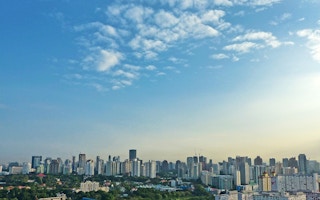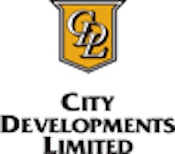Buildings that are built and renovated with the environment and resource-efficiency in mind are not only greener and cheaper to operate, maintain and demolish, but they’re healthier places for people to live and work in.
This was the key finding from a study by Singapore’s Building and Construction Authority (BCA) and the National University of Singapore which revealed that occupants of green buildings are less likely to experience sick building syndrome; this is a mysterious medical condition where people who spend a significant time in a building feel unwell due to bad air quality and poor ventilation.
People who spend up to eight hours a day in the same building - a group that likely includes the vast majority of Singapore’s working population - can suffer symptoms such as headaches, coughing, sleepiness, dry eyes and itchy skin. Their work performance can be negatively affected as a result.
The study of 14 buildings in Singapore revealed at the International Green Building Conference in Singapore on Tuesday morning, found that people who work in Green Mark (GM) certified buildings were 60 per cent less likely to suffer headaches and unusual fatigue than people who work in non-certified buildings, and 50 per cent less likely to suffer from dry or itchy skin.
The Green Mark certification system, which was first introduced in Singapore in 2005 and is now used in 14 countries in the Asia Pacific region, rates buildings on their environmental performance.
The research found that GM-certified buildings were better at maintaining a consistent temperature and humidity than non-green buildings. They were also better at regulating fresh air levels, and had lower levels of bacteria and fungi than non-certified buildings.
Through qualitative analysis of people’s perceptions of working in these buildings, the study found that people who work in green buildings were happier with the air quality, lighting levels, humidity and temperature than people in non-certified ones.
However, the study also showed that GM-certified buildings - which tend to be newer - showed higher levels of carbon monoxide and formaldehyde than non-certified buildings, although the levels of these pollutants were well below levels considered unhealthy.
The findings from the study will be used to trial new criteria for the Green Mark scheme, which was launched in 2005 and is now used in 14 countries in the Asia Pacific region.
The new criteria, which focus on the health implications of greener buildings, will be piloted in non-residential buildings for a one-year period with a view to improving, for instance, ventilation systems that regulate the intake of fresh air.
The push to improve the quality of the indoor environment in the city-state is central to the latest masterplan from the BCA, announced on Tuesday by Desmond Lee, minister for social and family development.
Speaking in a break-out session on the research after the opening plenary, Tham Kwok Wai, associate professor, Department of Building, National University Singapore, said: “We build buildings for people. It was an important step forward to see people and health feature more prominently in the third green building masterplan.”
“For a long time, people have been satisfied by single thermostat reading to gauge the quality of their indoor environment,” said Tham, who is the brains behind the study. “But now, with the introduction of smart technology, we will be able to tell so much more about where we live and work.”
Tham told Eco-Business that building systems needed to be redesigned to give the people who live and work in buildings more control over their indoor environment.
Most building interiors today tend to be controlled by owners rather than tenants, Tham said.
That should change as technology gives occupants more control of the indoor environments, he noted. “We need to move to a new paradigm that is more fine-grained to enable systems to be more reactive and responsive.”
Eco-Business is producing a special e-newsletter featuring stories on the proceedings at IGBC 2017, kindly supported by City Developments Ltd and the Building and Construction Authority. Sign up to receive the newsletter here.























